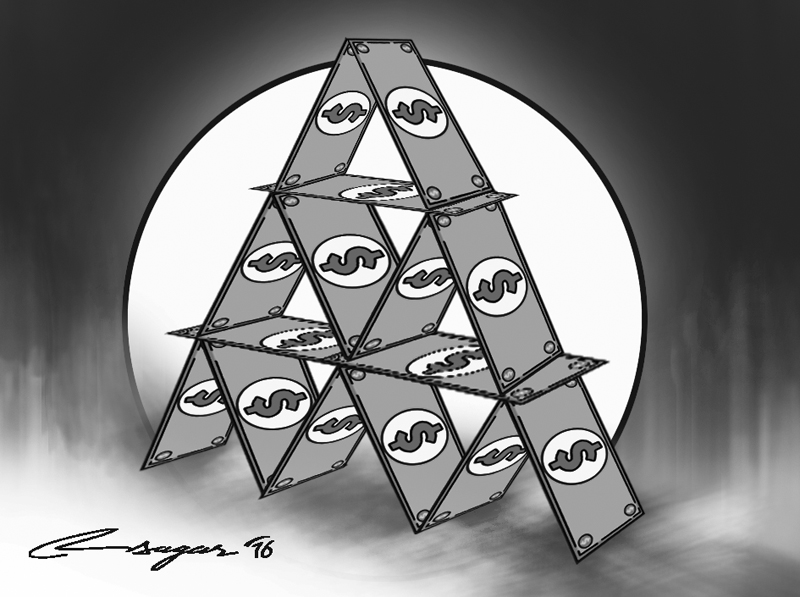Global markets: Impact on Nepal
Trump’s uncertain agenda on geopolitics and inward looking economic priorities which may ultimately impact the world’s trade and job market may also negatively impact Nepal’s remittances further
Global market conditions have started reversing after the US presidential election, and similar to the prediction on the results of the election itself, predictions on post election US market conditions have also mostly gone the other way.
The US dollar has strengthened significantly across all the currencies, and the interest rate curve has steepened.
Three major factors may have been affecting the behaviour of the market participants after the election results.
First, the uncertainty on Trump’s geopolitical agenda may be partly driving the market, particularly the new political and economic equation with China, Mexico, Europe and Russia as well as the inward looking economic priorities.
Second, global market’s pre-election risk positions were significantly lopsided on the wrong side (hindsight) of the fence as the election result was a complete surprise for the pundits of the market, making the “Brexit ++” from a hilarious to a historic remark.
Hence current market moves on currencies and interest rates are partly driven by the unwinding of the pre-election risk position as most of the annualised gains in emerging market currencies are wiped out by the post election depreciation.
Foreign investors’ sentiment towards the emerging market has deteriorated across asset classes as the USD strengthening continues and uncertainty rises over global inflation outlook.
The third major market factor lies in the pure economics driven by interest rates and exchange rates of the underlying global trades.
President-elect Donald Trump is focusing on fiscal stimulus by expanding development expenditure, particularly infrastructure spending and also partly by tax cuts which in turn are expected to push both growth and inflation.
If this goes as per the plan, then most probably this could be the end of a lower interest rate regime and the USD interest rate may start rising faster than expected.
Interestingly, global markets today are so interconnected that any development or even expectation of development in any major markets almost instantly triggers a chain reaction across the global markets, and, when it comes to the US, which accounts for almost 25% of the Global GDP, and the US dollar being the largest settlement currency, the impact is most prominent.
Current developments in US dollar exchange rate and interest rates pose heightened threats of outflow of funds from the emerging markets that have enjoyed the lower rate regime for long.
Older folks remember the 90’s Asian crisis particularly by the current impact seen in the local currency bond market of Malaysia and Indonesia as they have the highest foreign ownership in local bond market.
When it comes to the Nepal market, again the three major factors drive the impact, commodity prices, exchange rate and workers’ remittances.
Commodity prices are rising gradually but still at the early stages of recovery, however, the prices are heavily influenced by the demand from China.
As China’s economic growth is still uncertain, clarity on the commodity prices is yet to be visualized. As Nepal’s economy is heavily dependent on imports, rising commodity price will have significant impact especially on inflation on imported goods and services.
Also the single largest import for Nepal is petroleum products (oil is 9.1% of total imports in FY16 and 14% in FY15). Oil price movements affect Nepal’s economy significantly.
The Nepalese currency is pegged with the Indian rupee. One INR is equal to 1.60 NPR for more than two decades and hence the Nepalese rupee exchange rate against the US dollar is a direct equation of exchange rate between the Indian rupee and the US dollar.
In recent weeks we have seen noticeable depreciation in Indian rupee largely due to mixture of events from overall USD strength post US election; demonetization of 500 and 1000 denominated Indian rupee and market rumours on shortage of the US dollar due to redemption of large Foreign Currency Deposit of Non Residents.
The Indian rupee depreciated against the US dollar to a historical low level at 68.86 INR which translated the Nepalese rupee to 110.18 NPR making imports very expensive, including the petroleum products.
As per the official data, workers’ remittances currently account for almost 30% of Nepal GDP (in FY16) with annual inflow of US dollar 6.2 billion and annual growth of 7.7%. Middle East and Malaysia account for about 95% of the Nepal’s’ manpower exports (excluding India as the data is not available -- the World Bank estimates India’s share in the range of 25-30%) and about 45% of inward remittances received.
This is likely to be at risk in FY17 as Nepal’s manpower exports have contracted by about 18% in FY16 on lack of demand from oil exporting nations and Malaysia.
A slowdown in the growth of overseas migrants is bound to affect remittance inflows, which subsequently would affect the major components in the services sector.
Trump’s uncertain agenda on geopolitics and inward looking economic priorities which may ultimately impact the world’s trade and job market may also negatively impact Nepal’s remittances further.
Slowdown in workers’ remittances will have a direct impact on liquidity, inflation and interest rates.
Bazgain is Head of Financial Markets and Financial Markets Sales at Standard Chartered Nepal






